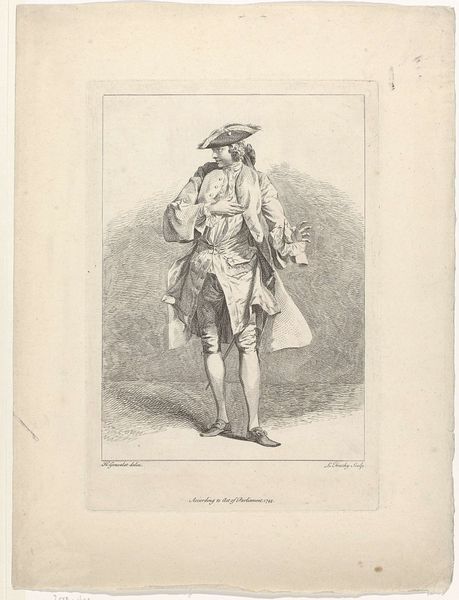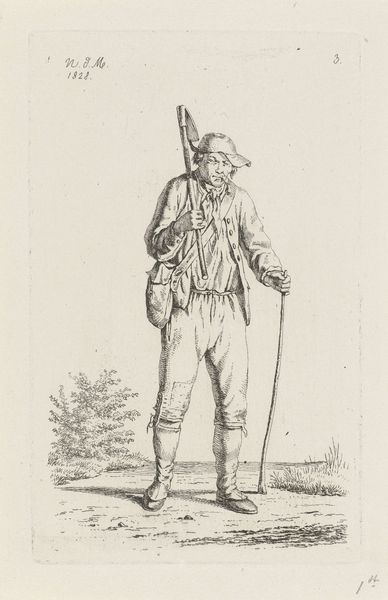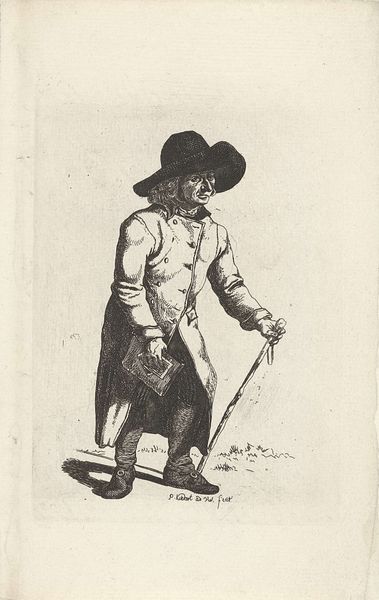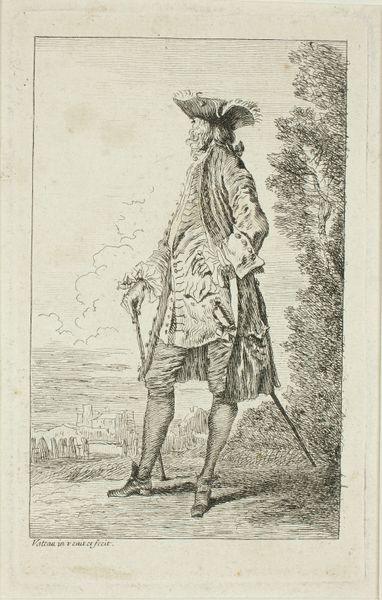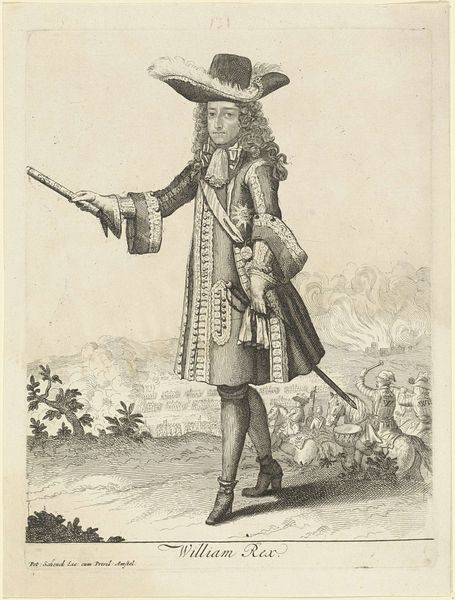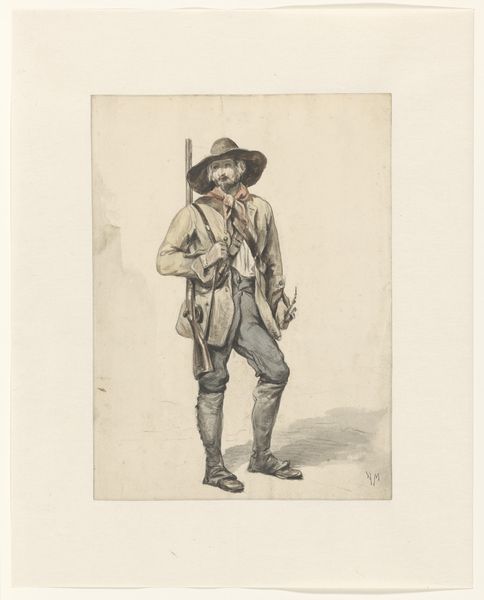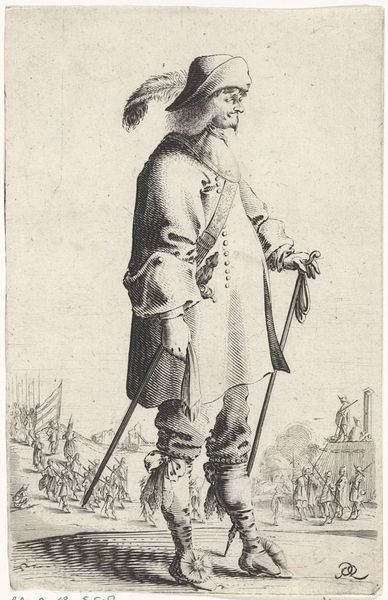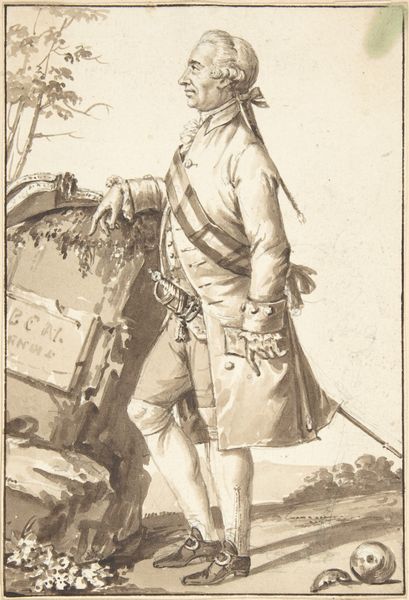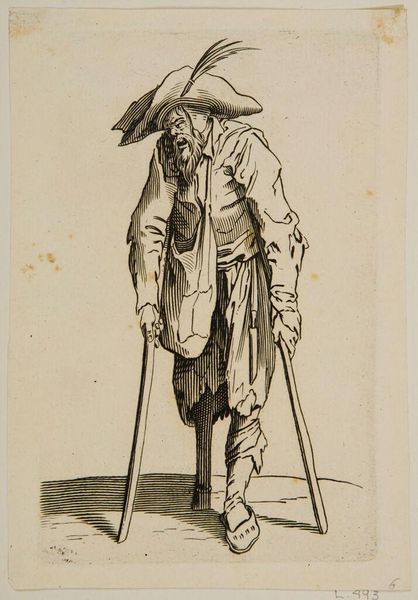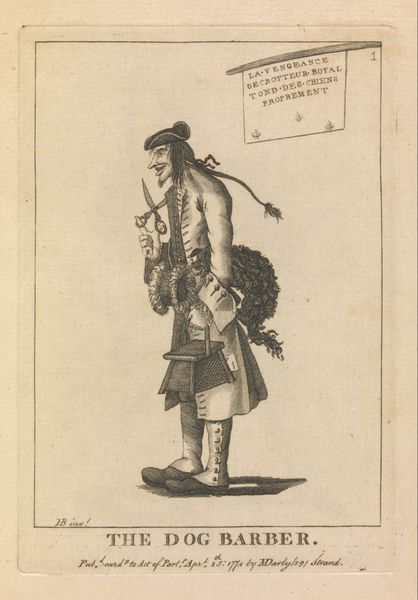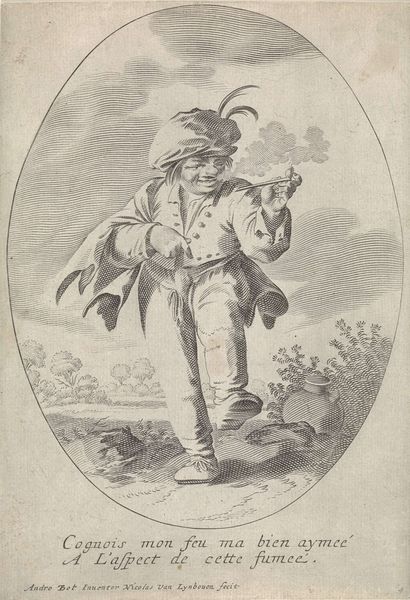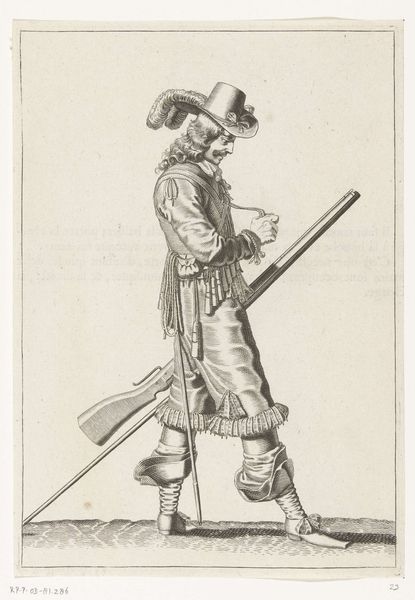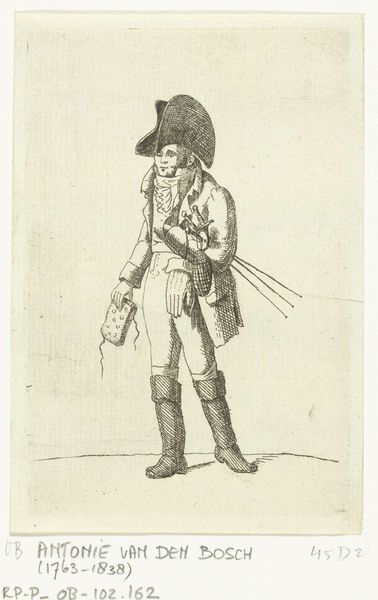
print, engraving
# print
#
old engraving style
#
landscape
#
figuration
#
romanticism
#
history-painting
#
engraving
Dimensions: height 123 mm, width 101 mm
Copyright: Rijks Museum: Open Domain
Curator: Good day. We are looking at "Landschap met een soldaat", which translates to Landscape with a Soldier, a work on print by Carel Webbers dating from 1781 to 1837. Editor: Oh, what a wistful piece! He looks so lost in thought. There's a quiet dignity to him, a stoic calm amid what feels like a barren, post-battle landscape. Curator: Indeed. Notice how the engraving, while minimal, emphasizes the soldier's attire and equipment? The large fur-trimmed coat, feathered hat, and of course, that impressively oversized sword—symbols of rank, power, and the burden of leadership in times of war. Editor: And that's the real hook for me—it’s not glory we see; it’s weight. That heavy coat looks like the world on his shoulders, doesn't it? It's such an intimate moment. Curator: It pulls on elements common during the rise of Romanticism, a time that was seeing increased fascination for the individual. Editor: So what history might the artist be calling upon, here? Is there something else being suggested? Curator: History paintings of the period often served as moral lessons and promoted civic virtues, so perhaps we're meant to contemplate a past era? It reminds us that war is a cycle, and landscape retains the memories even if human witnesses do not. Editor: You're so right. And despite all the details, the artist’s rendering creates this feeling of solitude; it's potent stuff. Curator: What stays with me is Webbers' skill to combine those sentiments with simple graphic techniques, capturing not just an image of a soldier, but a portrait of remembrance, perseverance, and quiet dignity within times of instability. Editor: Yes. Thank you. It really is amazing what emotions a few well-placed lines can evoke. What I felt on first glance was nothing that could fully prepare me for what is happening here.
Comments
No comments
Be the first to comment and join the conversation on the ultimate creative platform.
